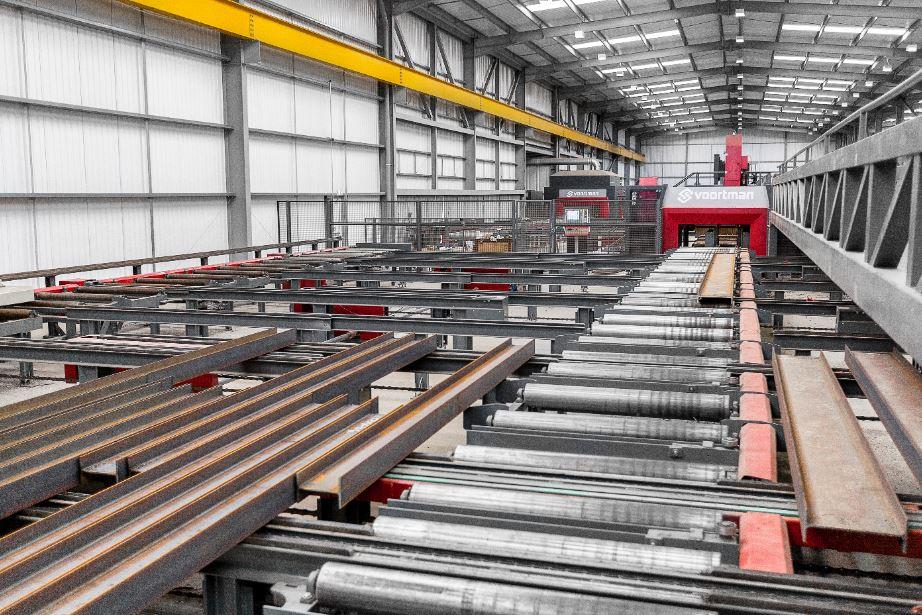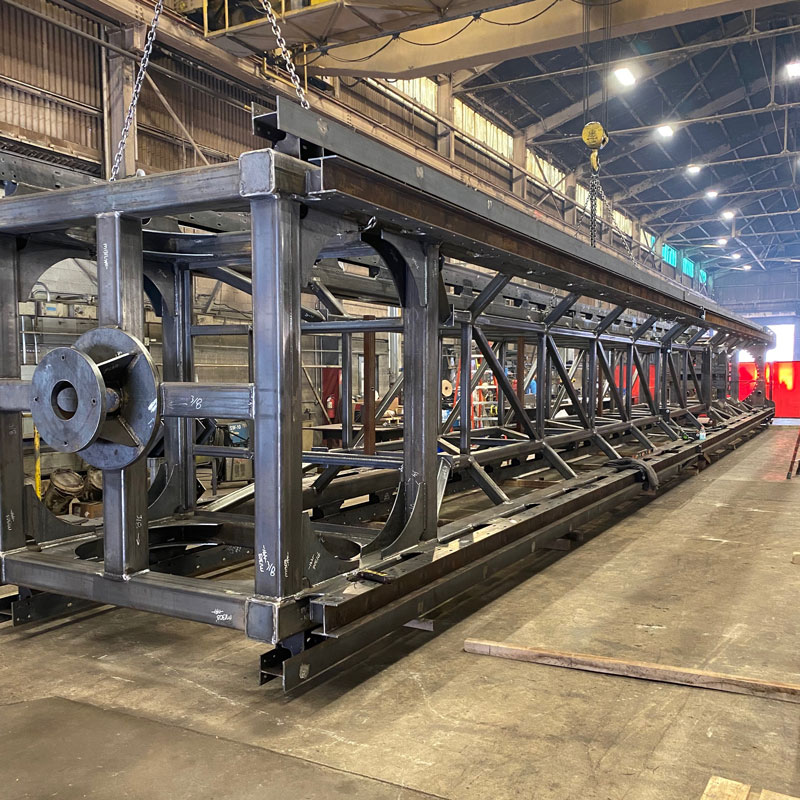Alpha Reo: Blazing A Trail in Reinforced Steel Solutions
Alpha Reo: Blazing A Trail in Reinforced Steel Solutions
Blog Article
The Ultimate Handbook on Personalized Steel Fabrication Solutions for Structural Projects
In the world of structural tasks, the importance of custom-made steel fabrication options can not be overstated. From the fundamental understanding of steel manufacture basics to the complex procedure of selecting one of the most suitable products, every action in this journey plays an essential role in the supreme success of a job. As we browse through the complexities of layout factors to consider, fabrication processes, and high quality control actions, an extensive manual acts as a leading light for experts looking for quality in steel manufacture solutions. Stay tuned to discover the understandings that can change the way structural projects are approached and performed.
Comprehending Custom-made Steel Construction Essentials
Exploring the basics of custom-made steel construction offers insight right into the detailed procedure of changing raw steel into tailored architectural parts. Custom-made steel construction is a specific manufacturing strategy that includes cutting, shaping, and assembling steel materials to develop one-of-a-kind frameworks according to certain project demands. Understanding the fundamentals of custom steel manufacture is vital for making certain the successful implementation of architectural jobs.
The procedure normally begins with the analysis of job specifications and style demands. This preliminary phase includes comprehensive planning and collaboration between developers, producers, and engineers to identify the most suitable technique for making the steel elements. Accuracy is vital throughout the fabrication procedure, as also minor inconsistencies can impact the structural honesty of the end product.
Various strategies, such as reducing, welding, and shaping, are employed to change raw steel into the wanted architectural aspects. Skilled producers use innovative machinery and tools to make sure precision and consistency throughout the construction procedure. Quality assurance measures are executed to confirm the honesty of the fabricated components before they are put together on-site, guaranteeing compliance with market criteria and task specifications.
Selecting the Right Steel Materials

Firstly, the kind of architectural project and its specific needs play a critical function in figuring out the most appropriate steel products. Variables such as the load-bearing ability, environmental conditions, and wanted life expectancy of the structure will dictate the grade and sort of steel that must be utilized.
Moreover, the physical buildings of the steel, consisting of ductility, weldability, and toughness, must straighten with the project's requirements to ensure ideal performance and longevity (steel fixing). Additionally, factors to consider such as rust resistance, cost-effectiveness, and schedule of the steel materials need to likewise be thought about during the choice process
Style Factors To Consider for Structural Projects
Structural tasks necessitate precise focus to develop factors to consider to make certain both performance and security are prioritized throughout the construction process. Numerous key elements need to be taken right into account to guarantee the success of the endeavor when it comes to creating architectural tasks. Firstly, the structural stability of the building need to be a leading concern. This includes examining lots, stresses, and environmental elements to figure out one of the most ideal layout that can hold up against numerous problems with time. In addition, considerations for the functionality of the structure play a critical role in the design procedure. Recognizing the objective of the building and how it will be utilized aids in developing a layout that maximizes efficiency and use. Integrating elements that boost the appearances of the framework can even more elevate the total style. Balancing performance, aesthetics, and safety and security is necessary in creating effective structural tasks that meet both sensible and visual needs. By thoroughly taking into consideration these elements throughout the design stage, engineers and engineers can make sure the structural job's success from perception to completion.
Streamlining Manufacture Procedures for Efficiency

Furthermore, applying lean manufacturing principles can substantially boost effectiveness in steel fabrication. By steel fixing minimizing waste, maximizing operations, and improving communication in between various teams involved in the manufacture process, jobs can be finished extra swiftly and with higher quality requirements.
Moreover, developing an efficient manufacturing schedule and workflow can help in prioritizing tasks, designating resources efficiently, and conference job due dates immediately. By having a clear strategy in position and regularly monitoring progress, any potential bottlenecks or delays can be identified and addressed promptly, ensuring smooth and efficient fabrication procedures for architectural tasks.
Quality Assurance and Job Administration in Steel Construction
To guarantee the successful implementation of steel fabrication jobs, thorough quality assurance measures and efficient task management practices are crucial parts in keeping precision and meeting customer expectations. Quality control in steel fabrication entails extensive evaluations at numerous stages of the construction procedure to validate compliance with project specs and market standards. This consists of product testing, dimensional checks, and weld examinations to make sure structural honesty and security.
Project monitoring plays a crucial role in collaborating the different elements of steel fabrication jobs, such as scheduling, source allocation, and interaction among group members. A distinct project plan with clear purposes, turning points, and timelines helps to keep an eye on progress and attend to any prospective concerns proactively. Efficient interaction between all stakeholders, including customers, service providers, fabricators, and engineers, is essential for ensuring that the job proceeds efficiently and meets the preferred high quality criteria.
Conclusion
To conclude, personalized steel fabrication plays an important role in structural projects by offering customized services using the ideal products and design factors to consider. Effectiveness in manufacture procedures, quality assurance, and efficient job administration are essential for effective outcomes. By understanding the fundamentals of customized steel fabrication and executing streamlined processes, job teams can supply premium and durable structures that meet the specific demands of their customers.
Custom-made steel construction is a specialized production strategy that entails cutting, shaping, and setting up steel materials to develop one-of-a-kind structures according to details task requirements.To make sure the successful execution of steel construction projects, careful high quality control steps and effective task management methods are essential elements in keeping accuracy and meeting customer expectations. Quality control in steel manufacture includes extensive inspections at numerous stages of the fabrication procedure to verify conformity with job specifications and market standards (steel fabrication melbourne).Project monitoring plays an important role in collaborating the various facets of steel fabrication tasks, such as scheduling, source allotment, and interaction among group members.In final thought, custom-made steel manufacture plays a critical duty in structural jobs by providing customized remedies utilizing the appropriate products and layout factors to consider
Report this page